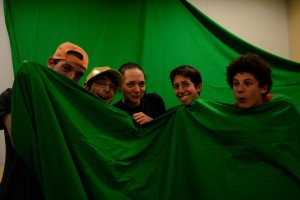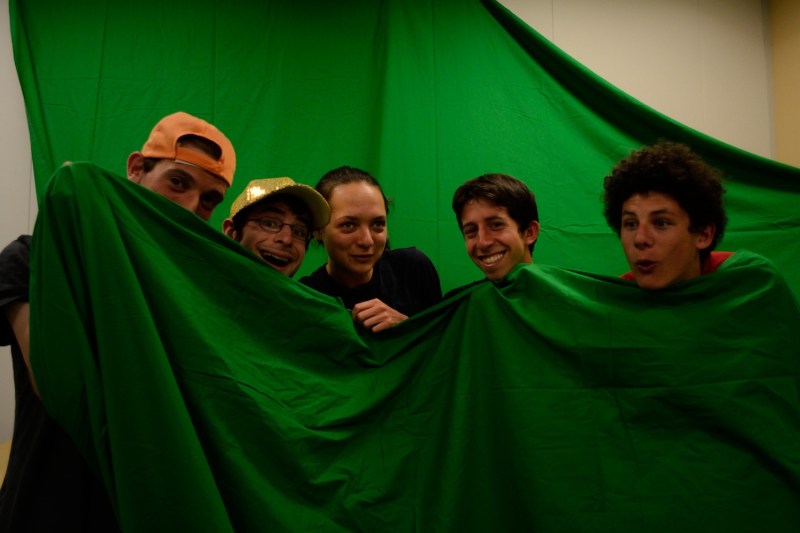Editors of the Stanford Flipside reminisce about stunts, jokes and trickery
“World’s Best Minds Gather at Exotic Erotic”
“Student’s Poor Midterm Grade Actually Causes Apocalypse”
“Report: Stanford Student Too Busy To Breathe”
“Center for Coming Up With Fancy Names for Silly Things Announces New Global Peace Summit for Prosperity and Change”
These headlines come from none other than the Stanford Flipside, a weekly satirical news publication that combines pop culture, social and political commentary and campus-centered humor to entertain students. Known for being one of the more unique and quirky campus publications, the Flipside also contains popular puzzles students typically solve upon picking up the pamphlet in the dining hall.
It all started more than four years ago, when Jeremy Keeshin ’12 and his high school friends created a publication similar to the Flipside at their high school. The Flipside is still published at Deerfield High School and Northwestern University.
“A few of my friends were really into The Onion and satirical writing,” Keeshin said. “I brought it here to Stanford, doing it with some of the guys in my freshman dorm.”
At Stanford, the Flipside started as a club with a short, weekly format paper which increased readability, offered more visibility and allowed for wider distribution.
“We’d say ‘Let’s go to dinner at Wilbur!’ and we’d eat dinner there and distribute it there and the next night we’d be at Stern and we’d distribute it there. It started out with just us distributing it and we got some friends to do it but it was pretty tough initially,” said Zach Galant ’12, Flipside co-founder, describing the initial distribution process.
Even in the early years of the Flipside, the growing readership met the distribution with a mixture of excitement and anticipation.
“It’d be like ‘It’s the Flipside guy!’” Galant said. “People come to expect it on Mondays and if there was a holiday and we distributed on Tuesday, people would be like ‘Where were you yesterday?”
Distribution was difficult at first because only a small group of students were handing out copies, with hopes to cover the entire campus. Galant recalled bringing copies to IHUM lecture and putting them next to the lecture handouts.
“People would just come by and take the Flipside along with the handouts and I always thought it was really cool seeing people read it in lecture,” Galant said.
As the Flipside grew, so did its structure. The staff began having weekly brainstorm and editorial board meetings and added a “D-Day” — the group’s name for Distribution Day, on which the Flipside staff walks around campus, distributing copies of the Flipside to various dining halls. They also experimented with different collaborative websites in hopes of finding new ways to plan, structure and organize the newspaper.

“We still have the same problem that a lot of groups have of keeping people involved, but it’s gotten easier,” Keeshin said.
“We’ve started doing group writes,” Galant said. “We’d have a Google Doc and a bunch of people would be working on an article at the same time, building off of each other. It made the process so much better, getting a chance to work with other people.”
Along with articles and headlines, the Flipside features weekly cryptograms and Rebus puzzles.
“People get really excited about the puzzles,” Keeshin added. “My main goal is to have people read the articles but if they’re reading it for the puzzles, then I think they’ll also read the articles.”
“My favorite part is definitely the cryptograms,” said Katherine Scavo ’15. “One of my friends in the dorm and I really like figuring out the quotes and decoding them.”
The Flipside staff has added more outside activities to the Flipside over the years, including a fake activities fair in White Plaza during winter quarter to increase campus awareness of the Flipside and give the staff a chance to actively satirize pop culture and campus culture, instead of just writing about it.
“I was the President of the Resume Building Club,” Galant said. “I wore a suit and had resume-looking flyers and handed them out, asking students if they wanted to join the Resume Building Club. Jeremy was running the Stanford 7th Man Club, which was fans of Stanford basketball fans, and Dean Julie walked by and she signed up for the Breakfast Club.”
Another booth featured “the TSA frat” — Tau Sigma Alpha, a play on the Transportation Security Administration and airport security measures.
“They were wearing tanks that said ‘Frat Me Down’ and had little water bottles that you’d have to chug because you can’t bring them on and they’d pat you down,” Keeshin said.
The Flipside’s activity fairs have also included booths devoted to the Gospel of Tim Tebow and the Mile High Club.
“We blasted the mailing list right before the fair with claims that people knew were fake,” Keeshin said. “But it got people out to White Plaza [to come look at our booths].”
While the articles in the Flipside are written for the sake of poking fun at relevant campus or contemporary issues, some have been offended by its content.
“We wrote an article once titled ‘Stanford Cutting Mechanical Engineering — It’s Just Not Working,’” Keeshin said. “Some people thought it was a real article and got upset.”
“We also had a White Male Community Center booth at the activities fair and this girl just starting railing on us,” Galant said, laughing. “The guys stayed in character though, saying they were going to go to a Third Eye Blind concert and shop at Trader Joe’s.”
According to Galant, the Flipside has also had a lot of positive responses from students, such as people “screaming with joy” whenever they walk into dining halls carrying the stacks of copies or getting excited about the “Flipside guy!”
“We’ve have also had a lot of success online,” Galant added. “The first article we had that really went viral online was one called “The Party Starts Before Ke$ha walks in.” It was right when ‘Tik Tok’ was really popular and it got more Facebook shares than any other articles we’d had. It got posted to someone’s Tumblr and got 600 reblogs.”
“I think [the Flipside] is a really good voice that a lot of people can relate to but don’t necessarily have the venue to express it,” said Carlo Pasco ’13.
As both founders will graduate this spring, they bid their Flipside creation a doleful farewell. Galant and Keeshin plan to work together on a start-up called CodeHS, which will involve teaching computer science to high school students.
According to Keeshin, the future of the Flipside next year looks promising.
“We have a really high bar for quality for the Flipside and I hope that the quality remains high,” he said. “I have one goal for the Flipside and that is to be entertaining for five or 10 minutes every Monday.”
The Stanford Flipside was founded by Jeremy Keeshin ’12. Zach Galant ’12 and Adam Adler ’12 have contributed to the campus publication since 2008. Eric Karpas ’12 and Laney Kuenzel ’12 joined in 2009 and 2010 respectively.
The original version of this article incorrectly described The Flipside’s original format and distribution process. The Daily regrets the errors.
